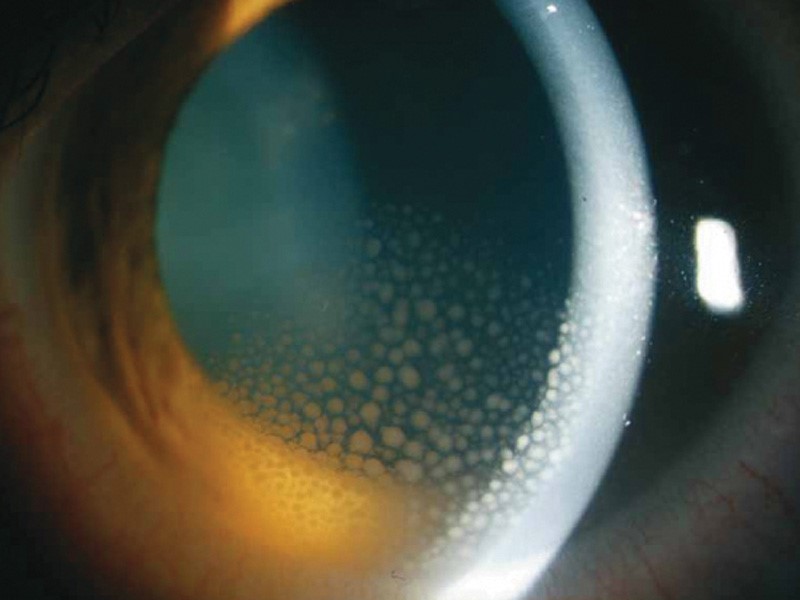Uveitis
What is it?
Uveitis is an inflammation within the eye that affects one or more of the three parts of the uvea: the iris (which gives color to the eye), the ciliary body (behind the iris, where the aqueous humor is produced) and choroid (behind the retina). It accounts for 10-15% of cases of blindness in developed countries and can occur at any age, being more common in young or middle-aged patients.
They are classified, according to their anatomical location, as anterior uveitis, intermediate, posterior and panuveitis. Anterior uveitis, which is the most common form, affects the iris (iritis), and sometimes the ciliary body (iridocyclitis). Intermediate uveitis affects the ciliary body and structures near him. In posterior uveitis the choroid (choroiditis) is affected, but often also affects inflammation adjacent to be in direct contact with it (chorioretinitis) retina. Sometimes the three parts of the uvea are compromised, leading to panuveitis.
Symptoms
The symptoms depend on their location. The above and intermediate uveitis cause redness, eye pain, tearing, photophobia (intolerance to light) and blurred vision. Later on, floaters are usually present (perception of floaters), and vision loss, variating depending on the size and location of lesions.
Inflammation can occur in only one eye or both (simultaneously or separately in time). It can have acute and sudden (with a shorter duration than 3 months), or have a chronic course with a more gradual and longer onset. Relapses or recurrences may be infrequent, and depending on the degree of inflammation theycan lead to blindness, bilateral irreversible in some cases.
The origin of intraocular inflammation can be very diverse. We divide the causes in idiopathic (without finding the causes infectious and noninfectious (immune or traumatic). Infectious agents include viruses (such as herpes), bacteria (such as tuberculosis or syphilis) or parasites (such as toxoplasmosis, most common infectious cause). The source of infection cannot only affect the eye or be associated with systemic diseases (such as juvenile idiopathic arthritis, etc.)
During the initial study and monitoring, most patients may be required blood tests, X-ray examinations or other special additional tests. In specific cases it may be necessary to make a puncture or biopsy inside the eyeball to search cells, inflammatory or DNA molecules, in order to help a more accurate diagnosis.
Treatment
Treatment depends on the cause that results in inflammation, and should be started as soon as possible. In those of infectious origin, antibiotic treatment can be curative. In most patients, corticosteroids are the mainstay of treatment in the acute phase, being in the form of eye drops, injections around or within the eye, or systemic (oral, intramuscular or intravenous). In some immune deriving, chronic, and difficult to manage uveitis or having complications arising from the use of corticosteroids origin, the use of immunomodulatory drugs may be needed to control inflammation (for a long time or even for life). Some of these drugs can have side effects requiring frequent monitoring.
In other cases it may be necessary to perform surgery with diagnostic purposes to treat some complications of intraocular inflammation (especially in chronic forms), such as cataract, glaucoma, persistent opacity of the vitreous, intraocular bleeding, or retinal detachment.
Prevention
A thorough eye examination and a complete medical history, both general and ophthalmologic, is essential to be able to investigate the cause of the inflammation. Uveitis is one of the eye diseases that most often can be related to other diseases of the human body (arthritis, Wegener’s granulomatosis and other systemic vasculitis), making it convenient to have a multidisciplinary management and study that includes an internist or rheumatologist . In the Barraquer Ophthalmology Center we revise our patients integrally, with a close collaboration between specialists.
Keep in mind that, in 35% of patients, the exact cause or origin of the inflammation is never found.

